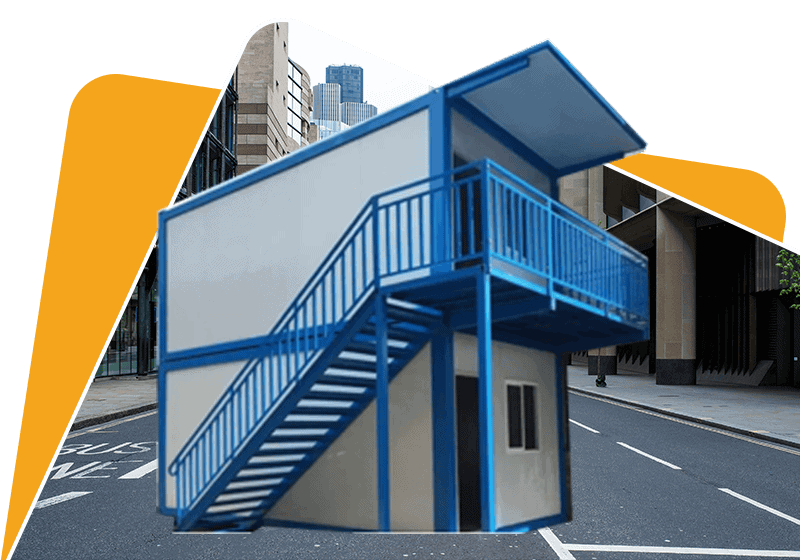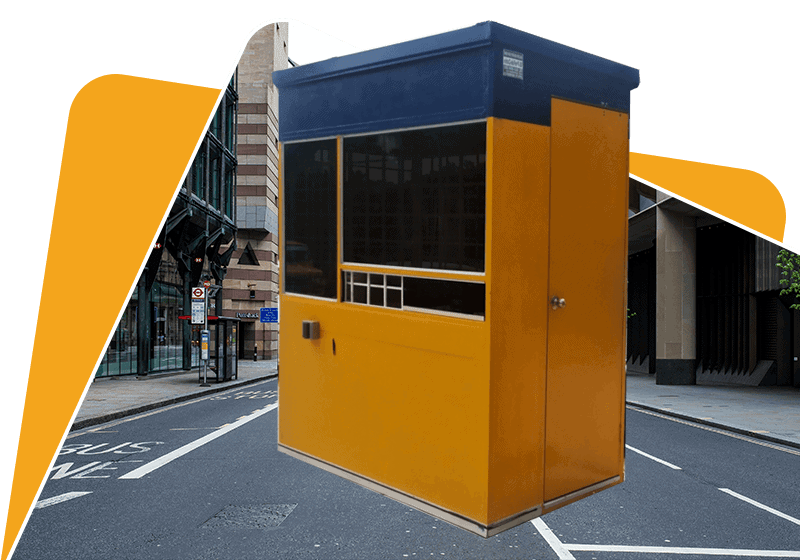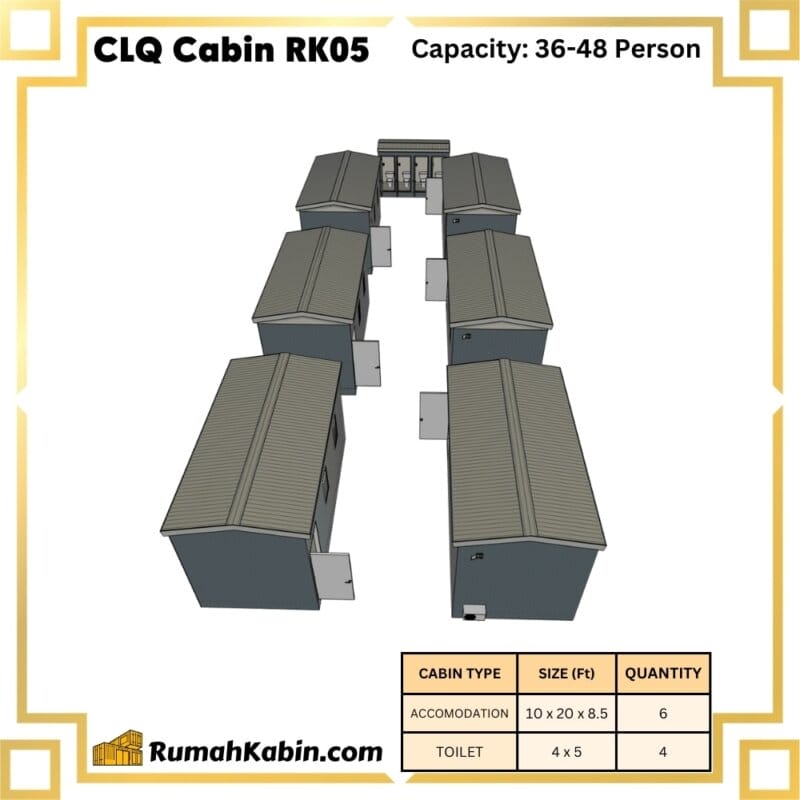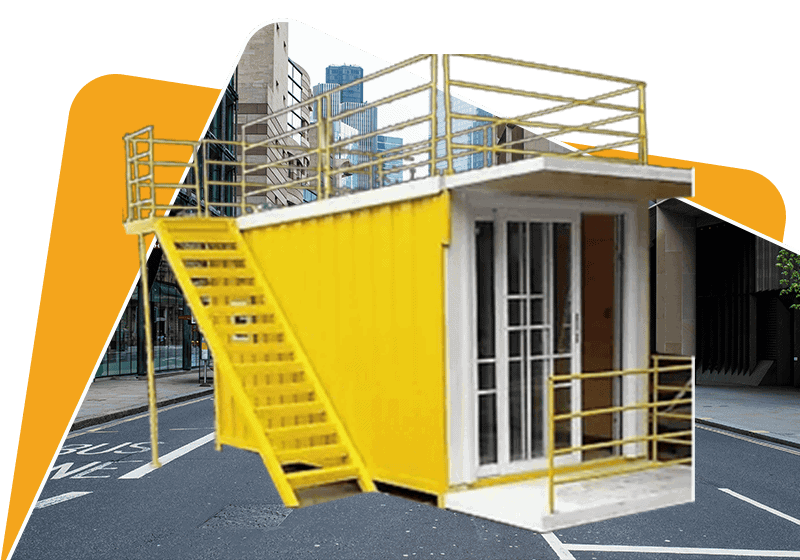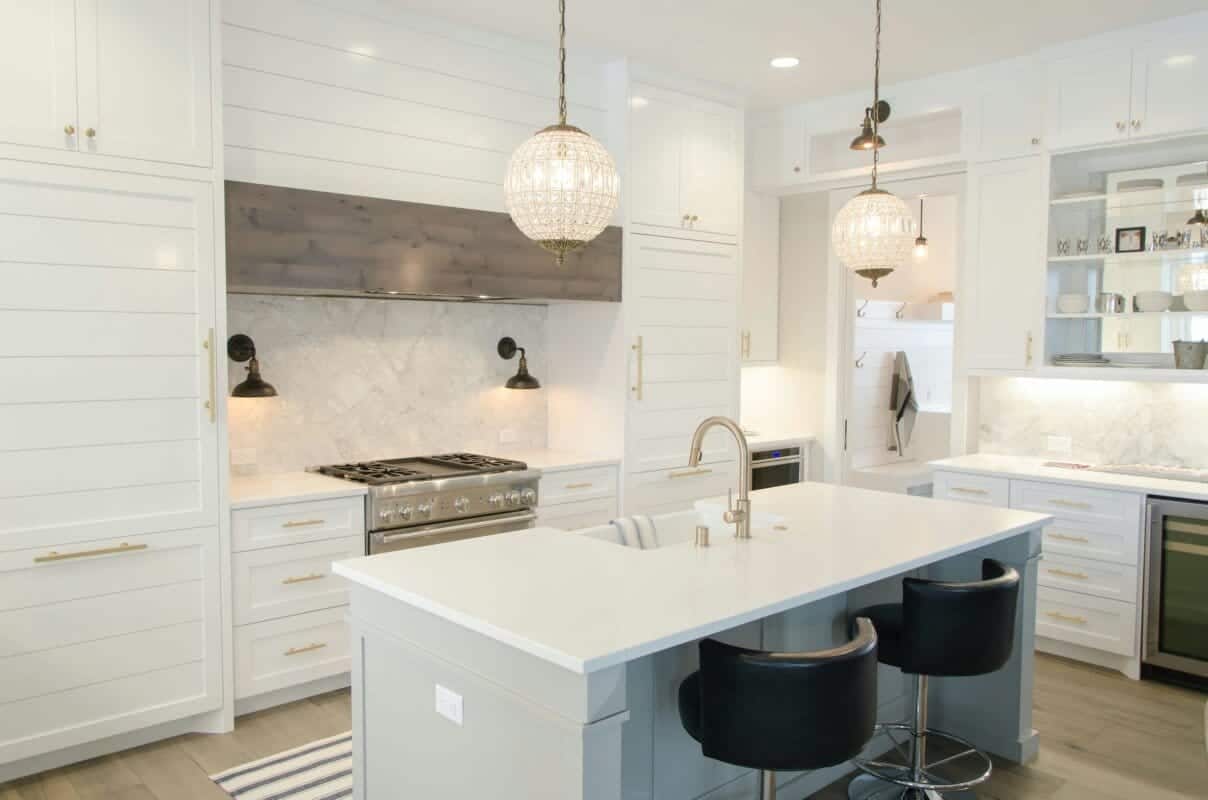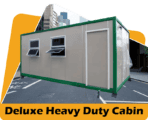10 popular questions about Container House in Malaysia

10 popular questions about Container House in Malaysia
- What are container houses?
- What are the benefits of living in a container house?
- What are the disadvantages of container homes?
- How much does it cost to build a container house in Malaysia?
- Are container houses legal in Malaysia?
- How do you regulate temperature in a container house?
- How do you make a container house livable?
- What are the best places to buy a container house in Malaysia?
- What permissions and approvals are needed to build a container home in Malaysia?
- Are container homes eco-friendly?
What are container houses?
Container houses are a form of prefabricated housing that uses old shipping containers as the structural basis for the home. Container homes are built by stacking, arranging and welding shipping containers together into a house frame.
Here are some key things to know about container houses:
- Container homes can be built from single containers, or by combining several containers together into larger configurations.
- The container itself forms the shell and structure of the house. All plumbing, electrical, drywall, flooring, windows, etc are installed just like a conventional home.
- Containers come in standard 20ft and 40ft sizes, so container homes layouts utilize the modularity and rectangular shape.
- With containers as the skeleton, container homes can take any external shape, style or size. Exteriors can look like traditional homes.
- Interiors feel like conventional homes once finished, though layouts optimize the container shape.
- Container homes are considered green and sustainable as they reuse existing steel structures.
Overall, container houses are an innovative, sustainable and cost-effective housing option gaining popularity worldwide. The simple container structure becomes the frame for a unique, eco-friendly home.
What are the benefits of living in a container house?
There are many benefits to living in a container house:
- Cost savings: Container homes are significantly cheaper to build than conventional homes, with estimated savings of 20-50%. Containers themselves are inexpensive.
- Sustainability: Repurposing used shipping containers is eco-friendly and reduces waste. Container homes have a small carbon footprint.
- Strength & durability: Containers are structurally very strong and resistant to rot, mold and pests. Steel offers natural resistance to elements.
- Modularity: Containers have standard sizes which makes design and expansion easier. Layouts are flexible.
- Speed of construction: Container homes are prefab and simple to assemble on site. This allows very fast construction vs conventional homes.
- Customizable: Despite standard container sizes, homes can be highly customized with limitless finishes and designs.
- Mobility: Container structures can be disassembled, moved and reconstructed if needed. This enables relocation.
Overall, container houses offer affordable, sustainable and customizable housing in a fraction of typical construction time. The innate strength of steel containers also provides durability.
What are the disadvantages of container homes?
While container homes have many benefits, there are also some potential disadvantages to consider:
- Small spaces: Container sizes limit space. Careful design is needed to make efficient use of the narrow rectangular floorplans.
- Temperature control: Steel transfers heat/cold easily. Proper insulation is key to regulate interior temps. Passive solar design helps.
- Building codes: Container homes may not meet building codes in some areas. Permits and approvals must be reviewed first.
- Financing: Some lenders may be hesitant to finance container housing. Must confirm financing options are available.
- Resale value: As a non-traditional home type, resale of container homes is unproven. There is uncertainty over future resale.
- Customization required: Containers alone don’t make livable homes. Signficant customization and finishing is required inside.
- Weight: Containers are heavy, often needing foundation reinforcement. Professional engineering advice is recommended.
With smart design choices and finishing, these potential disadvantages can usually be overcome or minimized in container house construction.
How much does it cost to build a container house in Malaysia?
The cost to build a container house in Malaysia can range quite widely, but is generally between RM50,000 to RM250,000, depending on size and specifications.
Here is a breakdown of typical container home costs in Malaysia:
- Used container purchase: RM5,000 – RM15,000 per 20ft container
- Foundation & site prep: RM5,000 – RM20,000
- Container delivery: RM2,000 – RM5,000
- Container modifications: RM5,000 – RM30,000 (cutting, welding, connections)
- Interior fit-out: RM10,000 – RM100,000+ (flooring, kitchen, bathroom, walls etc)
- Exterior finishing: RM5,000 – RM50,000+ (cladding, roofing, windows, doors)
- Permits & fees: RM2,000 – RM5,000
- Labor: RM10,000 – RM30,000
- Engineering: RM5,000 – RM15,000
Key variables affecting total cost include location, delivery fees, number of containers, customization level, fittings and finishes chosen. Overall though, container housing provides significant cost savings versus conventional construction.
Are container houses legal in Malaysia?
Yes, container homes are legal to build and live in across most of Malaysia. However, there are some important legal considerations:
- Land zoning laws – Some local councils may not permit container homes in certain residential zones. Always check land use and zoning restrictions first.
- Building codes – Container homes must meet overall building codes for safety, plumbing, electrical, ventilation, etc. Some modification is usually required.
- Permits – Like any home, container house plans must be approved through normal building permit process before construction.
- Restrictions – Some neighborhoods or areas have covenants prohibiting metal exterior homes. Check area CC&Rs.
- Utility connections – Container homes require normal electrical, water and sewage hookups and must meet utility standards.
- Insurance – Standard home insurance can be secured but may have limitations. Always clarify with providers.
With proper planning, design and permits, container houses can meet all legal requirements like conventional homes in Malaysia. The non-traditional structure simply requires some extra research and approval steps.
How do you regulate temperature in a container house?
Regulating interior temperature is important in container homes given metal’s conductive properties. Here are key ways to control container house temperatures:
- Insulation – Installing thick insulation in walls, ceiling and floor helps modulate heat transfer. Spray foam or rigid panels are ideal.
- Ventilation – Good cross ventilation with screened windows allows airflow. Strategic window placement improves circulation.
- Shading – External shading structures, overhangs and screened porches help protect from solar heat gain.
- Passive solar – Orienting glass to face winter sun helps passive heating. Overhangs block summer sun.
- HVAC systems – Like conventional homes, heating and cooling systems help maintain desired temps as needed.
- Thermal mass – Using internal concrete floors or tiles to absorb and slowly release heat helps stabilize temps.
- Smart materials – Using radiant barrier paints and foils in walls and roof also slows heat transfer.
With proper insulation, ventilation, shading and design, container homes can be thermally efficient and comfortable in Malaysia’s tropical climate. Air conditioning provides extra cooling as needed.
How do you make a container house livable?
Converting a basic shipping container into a livable home requires significant interior buildout and finishing. Here are key steps:
- Structure – The containers are welded together into the desired floorplan. Openings are cut for doors and windows.
- Insulation – Walls, ceiling and floor are spray foamed or fitted with rigid insulation panels for temperature and sound control.
- Vapor barriers – Vapor barrier paint or sheets are installed to prevent condensation issues.
- Utilities – Electrical, plumbing, and HVAC systems are roughed into the container shell. Outlets, wiring and piping are added.
- Wall finishing – Interior walls are framed out and finished with drywall, paneling or other surfaces. Trim is added.
- Flooring – Flooring like laminate, tile, or vinyl is laid down for comfort and aesthetics.
- Bathrooms – Bathrooms require plumbing for sinks, showers and toilets. Waterproofing is critical.
- Kitchen – Kitchen needs plumbing, electrical, cabinetry, and appliances installed. Granite or other counters are added.
- Lighting & fixtures – Interior lighting, fans, mirrors, closet systems, railings, etc are all installed.
With proper insulation, utilities, finishing and fixtures, an unlivable container becomes a beautifully appointed home. Appliances and furniture complete the living space.
What are the best places to buy a container house in Malaysia?
The container house market is still emerging in Malaysia, but there are a growing number of good suppliers to consider across the country:
- Kuala Lumpur area: Container Home Malaysia, Eco Container Home, Freight Container Homes Malaysia
- Johor: Liew Container Supplies, Smart Container House
- Penang: Container Living
- Selangor: IC Container House
- Melaka: Mega Container House
- Sabah: Borneo Container House
- Online: Lunar Construction, Malaysia Container House
Key things to look for in a container home company:
- Experience with multiple container projects
- Offer design assist and customization
- Use quality container mods and finishing
- Handle permits/approvals
- Offer delivery and installation
Be sure to get multiple quotes. Visit display homes. Review example projects. This helps ensure you get the best container home provider.
What permissions and approvals are needed to build a container home in Malaysia?
The key permits and approvals required include:
- Land title – Ownership of land where container home will be built.
- Council approval – Development order from local council approving residential build.
- Building plan approval – Official approval of container home building plans by local council.
- Utility applications – Applications to connect electricity, water supply and sewage.
- CF certificate – Certificate of Fitness from Fire Dept ensuring fire safety standards met.
- Construction permits – Standard building permits for foundation, structural, electrical, plumbing work.
- Final inspection – Local council inspection giving final Certificate of Completion once home is built.
The process ensures the container home meets zoning, building codes, utility standards and safety requirements before construction proceeds. Building permits also ensure registered contractors are used.
Are container homes eco-friendly?
Yes, container homes are considered an environmentally friendly and sustainable housing option for several reasons:
- Reuse of containers – Homes repurpose used shipping containers that would otherwise go to waste.
- Reduced building waste -Prefab structure minimizes construction scrap vs site-built homes.
- Energy efficiency – Proper insulation helps container homes use less heating and cooling energy.
- Smaller footprint – Compact shape makes efficient use of building space and land.
- Affordability – Lower costs increase housing access and reduce resource demands.
- Durability – Containers resistant to rot, pests and elements gives long lifespan.
- Transportability – Ability to relocate container homes reduces rebuild resources.
With eco-friendly and reusable materials, optimized footprints and quality construction, container homes are a greener housing choice. The homes themselves are also energy and cost efficient.
Key Takeaways:
- Container houses repurpose used shipping containers into low-cost, sustainable housing.
- Benefits include huge cost savings, strength, speed of construction and customizability.
- Downsides can include small spaces, temperature control issues and building code restrictions.
- Cost in Malaysia ranges from RM50k-RM250k depending on size and finishes.
- Container homes are legal if zoning, permits and utilities requirements are met.
- Temperature regulation requires insulation, shading, ventilation and passive solar design.
- Converting containers into homes needs extensive interior buildout and finishing.
- Top suppliers in Malaysia are found in KL, Johor, Penang, Selangor, Melaka and Sabah.
- Numerous approvals are needed from local councils before constructing container homes.
- Container housing is considered an eco-friendly and sustainable living option.
Conclusion:
- Container homes are an innovative and increasingly popular housing trend in Malaysia, offering affordable and sustainable housing by repurposing used shipping containers.
- With proper design and finishing, containers can be transformed into beautiful, customized homes at a fraction of standard home prices.
- However, container living also comes with challenges like temperature control, tight space and building restrictions that must be addressed through careful planning and workmanship.
- Overall, container houses provide a unique, cost-effective and eco-friendly housing option for the right owners who do sufficient research and preparation.
Kontraktor Rumah Kabin
Rumah Kabin Murah
Rumah Kontena Vs Rumah Kabin
Rumah Kabin Pasang Siap
Senarai Harga Kabin di Malaysia
Heavy Duty Cabin
Light Duty Cabin
